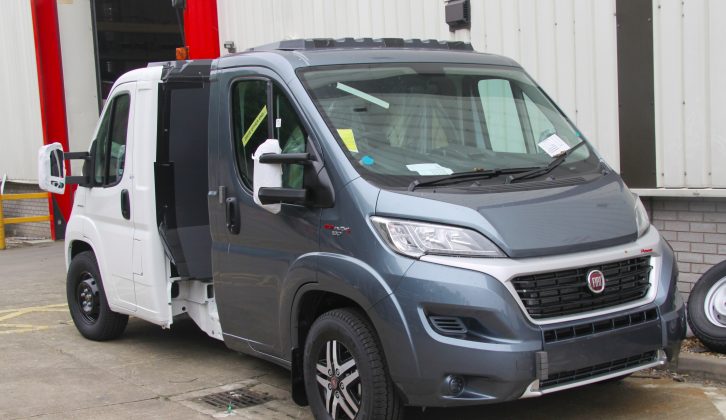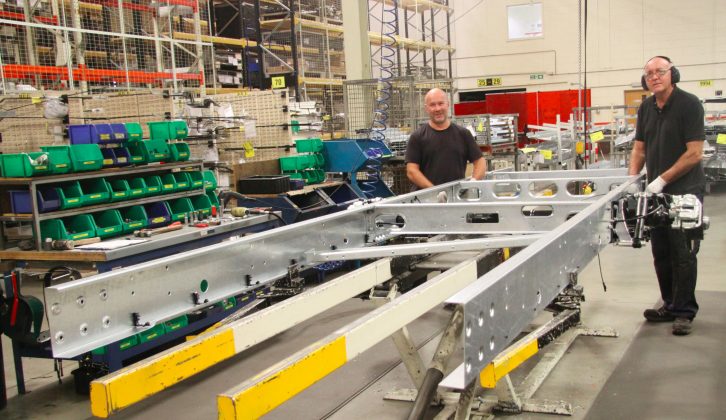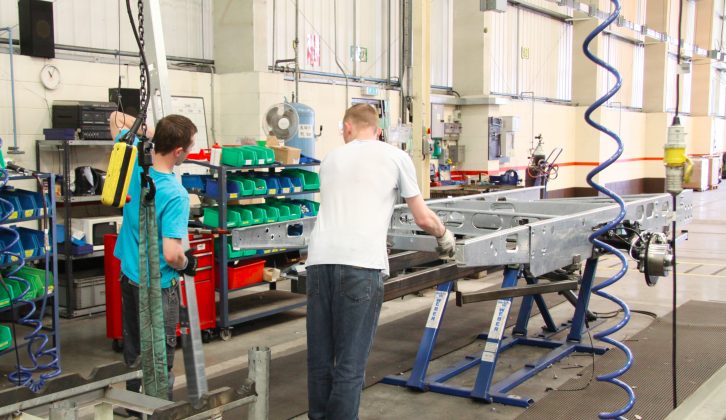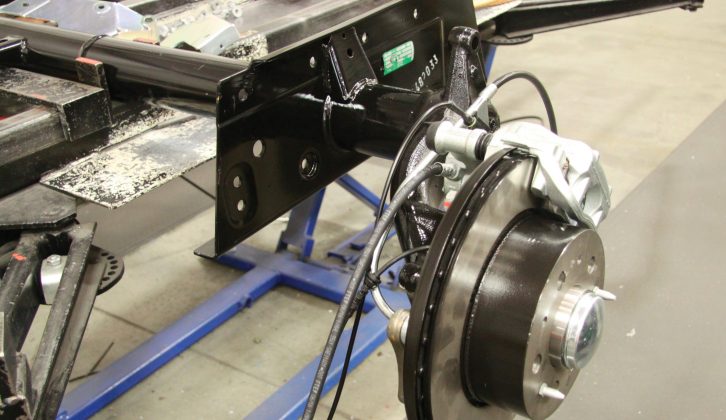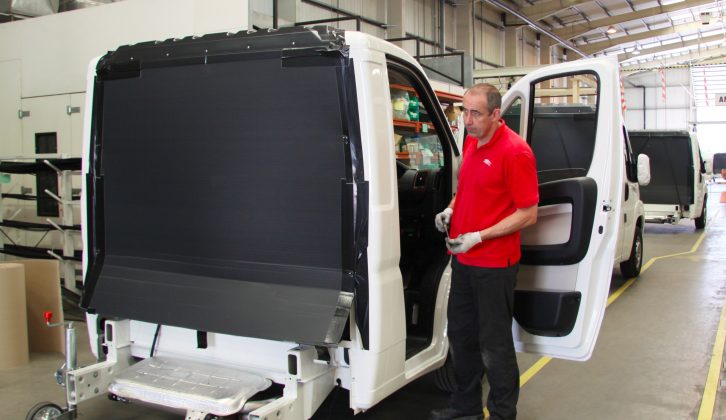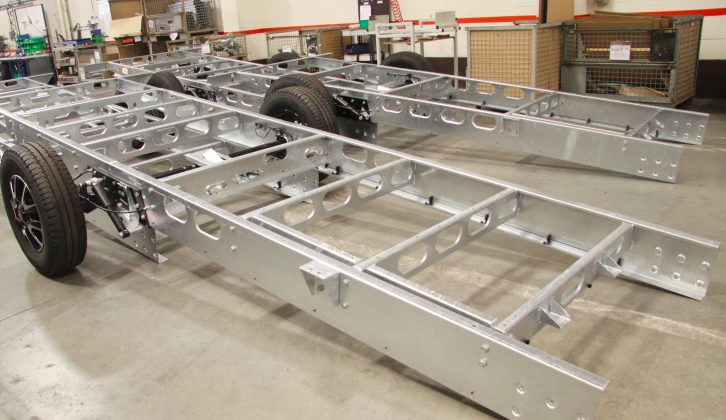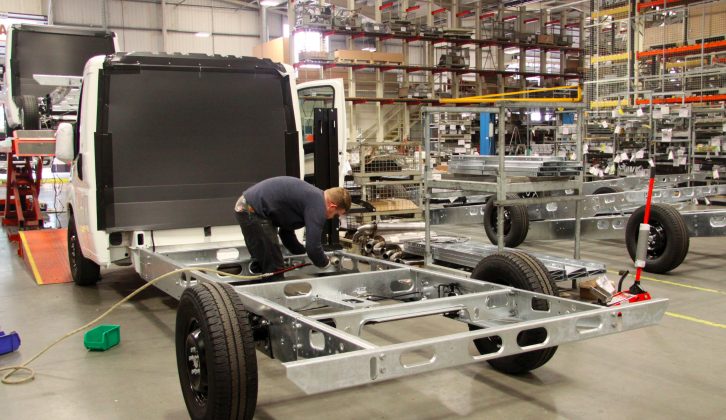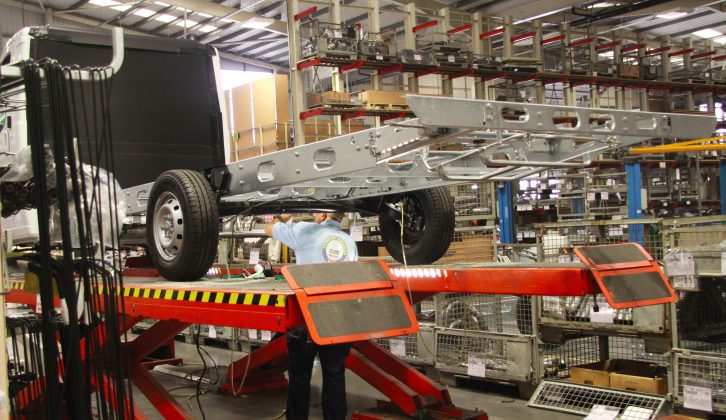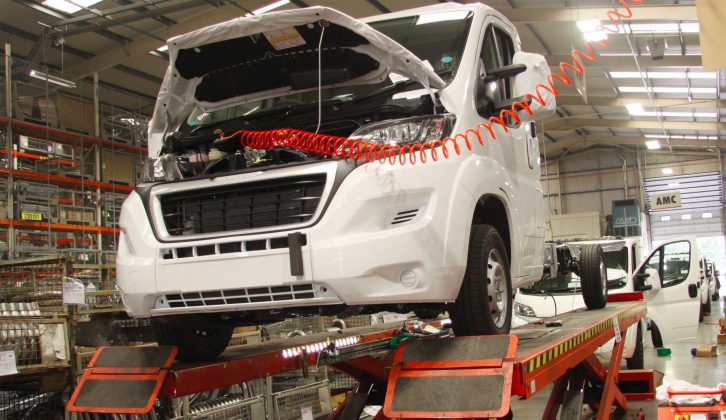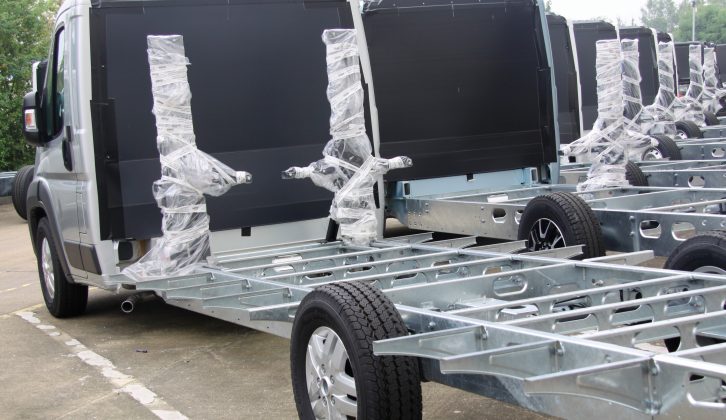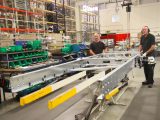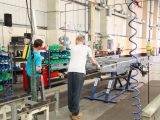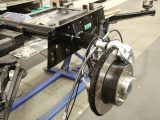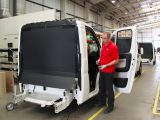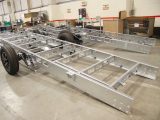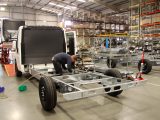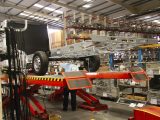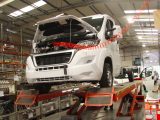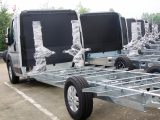Do you give much thought to what lies beneath your motorhome and the way it can affect the vehicle’s road handling?
If not, you’re not alone. But it’s hugely important – and one of the biggest names in the business is Al-Ko.
Here we go behind the scenes to find out how the Al-Ko AMC (Auto Motive Chassis) underpinnings are created.
The company produces bespoke chassis for a number of mainstream motorhome manufacturers, as well as for other uses.
It offers plenty of flexibility, because there are numerous configurations – high-level, low-level and double-floor, as well as chassis extensions for use with original base vehicle chassis.
How times have changed
When first introduced in the 1970s, a completed, manufacturer-supplied chassis had to be cut behind the driver’s cab and a lightweight Al-Ko AMC assembly bolted on.
Today, though, base vehicle manufacturers build the cab using dedicated chassis members supplied by Al-Ko and transport them back-to-back, i.e. chassis-less. No time (or, more importantly, expensive chassis rails) is wasted, because no further cutting is required.
The AMC system is available for front-wheel-drive base vehicles such as the Sevel trio (Fiat Ducato/Peugeot Boxer/Citroën Relay), VW Transporter and Renault Master, as well as the rear-wheel-drive Mercedes-Benz Sprinter.
The bulk are made in Germany on five production lines, as well as here in Great Britain, where a second production line has been implemented to increase UK production to approximately 3000 conversions a year.
The low floor or load height makes the chassis ideal for horseboxes, emergency vehicles, recovery vans and, of course, motorhomes.
On the factory floor
I was shown around the modern Warwickshire production plant, enabling me to see how versatile the chassis really is. It can be constructed in three different track widths and no fewer than 12 wheelbase variations, with supports to suit the customer-manufacturer’s needs.
Outriggers to support the body are added; the feature required for forward- and rearward-facing belted dinette seats is also fitted.
All chassis rails – which arrive from the German parent company for assembly – are hot-dip galvanised, giving long-life corrosion protection. Added to them is the French-made axle and the base-vehicle manufacturer’s rear hubs and disc-brake assembly.
A tubular spare-wheel carrier is fitted, before the chassis is introduced and bolted to the driving cab. The extension brake pipes are connected and bled, then the exhaust tail assembly is fitted.
Next, the vehicle’s alignment is checked and the wheels torqued to a specified measurement, before it’s taken for a drive around the plant. Finally, it’s ready for delivery.
Riding high
Double chassis platforms (or high frame) are also available. Here the converter can safely house heavy items such as heating systems, fresh-water tanks and leisure batteries.
Base-vehicle manufacturers have recently begun producing dedicated low or wide-track chassis suitable for coachbuilt motorhomes, but when it comes to handling and ride heights, Al-Ko Kober remains the winner.
Why? Well, as in modern passenger cars, Al-Ko uses a tubular axle incorporating a torsion bar combined with independent suspension units: no coil springs, and no cart-like multi-leaf springs.
In effect, the torsion bar can be likened to a long, flat coil spring that has been unwound. The units are force-fitted, being pressed into the tubular axle and given a precise twist to set ride height.
No room is taken up by this system, because it’s almost completely contained within the axle tube itself. Only the pivot points of the torsion bar protrude to allow for the fitting of the independent suspension swinging arms that take the hubs. Shock absorbers are added to further dampen the movement.
This suspension, combined with the low ride height achieved using an Al-Ko Kober AMC chassis, gives the best ride of any motorhome I’ve driven.
More to come?
Al-Ko’s other products include light trailer and caravan chassis, support legs (electric or manual) for tourers and motorhomes, and dedicated towbars for its chassis.
Air Top units (used by Auto-Sleepers on its panel van conversions) decrease the amount of body roll, while full air-assist suspension allows for the raising and lowering of the vehicle – this is ideal for minibus use, or levelling a motorhome on an uneven pitch!
Unfortunately, most motorhome suspension cannot be improved retrospectively, due to the lack of existing room within the wheelarch. However, with Bailey models all having Al-Ko chassis, and Auto-Trail, Swift and Auto-Sleepers now increasingly using Al-Ko on their new models, there’s plenty of choice available.
If you already have a motorhome with an Al-Ko chassis, you may be interested to learn that the company has appointed a major wholesaler, Nova Leisure, as an outlet for non-original component products such as exhausts and handbrake cables. There is also the possibility of another to follow.
Thanks to Al-Ko Kober UK Ltd.
The chassis can be constructed in three different track widths and no fewer than 12 wheelbase variations!
